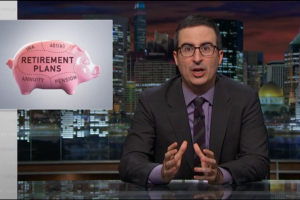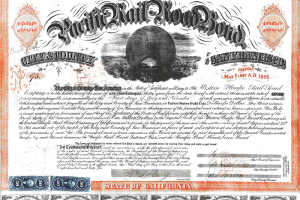Recently, a client asked me what I thought about a video that was making its way around Facebook a few weeks ago demonstrating the power of investing early. I can’t find it anymore, but the basic premise was something along the lines of if you invested just $2,000 each year in your twenties and did nothing else after that, you would be a millionaire by the time you were 57. The video showed viewers the power of compounding interest and the importance of saving early, which is a great message. Unfortunately, they used an unrealistic and misleading rate of return of 13% per year to exaggerate those points.
If we look at the past 80 years of data (1935 to 2014) the S&P 500 has returned on average 12.72% per year, which isn’t too far off from the 13% in the example and would add less than one year to the time it would take to hit a million. The average doesn’t tell the whole story, though.
The first problem with that number is it’s an arithmetic mean; a simple average of the annual return numbers. The arithmetic mean is a fine number to use for your expected return in any given year, but it doesn’t work well for longer periods of time because it ignores the variability of linked returns from year to year. As an example, let’s say you lost 50% the first year, but gained 100% the following year bringing you back to your original investment. The average return per year would be 25% (-50% + 100% = 50%; divide that by two), but your total return would actually be a big fat donut. That 0% return is what is known as the compound annual growth rate (CAGR), which is just a fancy investing term for geometric mean.
If we take that same 12.72% from earlier and calculate the geometric mean, the number drops to 11.10%. The standard deviation of returns over that period was 18.45%, and the more volatile an investment is the lower the geometric mean will be. Using the geometric mean in the aforementioned scenario it will now take you until age 62 to reach millionaire status.
Even that number presents an unreal expectation. Over the past 80 years the 3-month t-bill — a common measure of the risk-free rate — has had average returns of 3.66%. This gives us a market risk premium — the excess return one gets above the risk-free rate for taking on the risk of investing in the stock market — of 9.06%. The geometrically linked risk premium is only 7.33%. This is very important to understand because the current risk-free rate is essentially zero — not 3.66% — and has been for the past six years.
Interestingly, the geometric mean of inflation over the past 80 years was 3.65% — essentially the same as the risk-free rate. Adjusting for inflation gives you a better idea of what a dollar amount projected decades into the future is actually worth in today’s dollars. The bottom line is 7.33% is about what your current expected return for stocks should be based on the past 80 years of data.
Using this new return number, if you invest $2,000 per year in stocks every year of your twenties, you should have a reasonable expectation of reaching $1,000,000 in today’s purchasing power by age 80, not 57.
There are additional factors to consider such as taxes, fees, transaction costs, and irrational human behavior that would further diminish returns, but those will vary from person to person. Regardless, 13% is far from realistic and to plan on that level of return could be devastating to your financial future. The underlying message is still the same, though — the earlier you start investing the more time you will have for compounding to work its magic. Just don’t stop when you turn 30.




